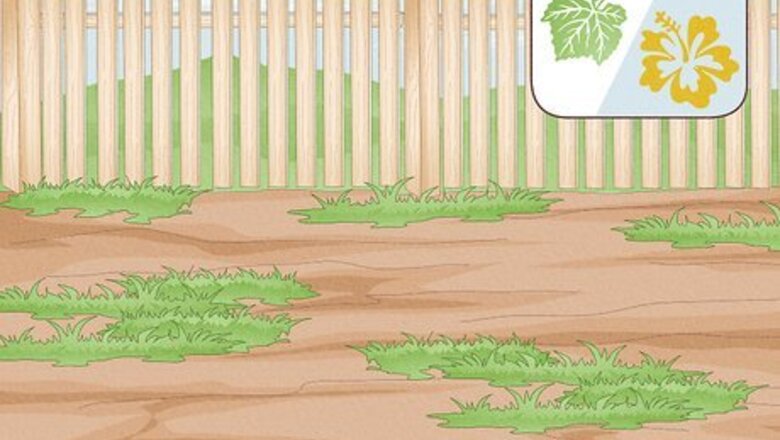
views
Getting the Lawn Ready
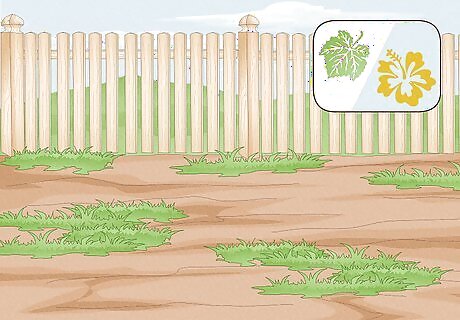
Wait to lay down new turf until fall or spring if possible. Fall and spring are the best seasons for turf to root into the ground because of all the rain. Winter can be too cold and summer can be too dry for turf to root. If you wish to put down turf in the summer, or your area does not get enough rainfall in fall and spring, install a watering system or use a hose and sprinkler to make sure your turf gets enough water. If you are installing turf in the fall, lay it down early enough so that it is well established and rooted at least 6 weeks before the first hard freeze of winter. Artificial turf is more expensive than real sod up front, but it doesn't need real maintenance afterwards, and often has a warranty of about 16 years.
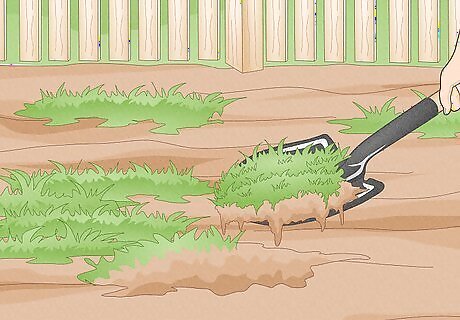
Remove any existing grass or turf from the lawn. Pull up any weeds or stones you come across. Use a spade or shovel to make clearing out the old lawn easier. If the lawn has a lot of weeds, spray it with a weed killer and wait about 48 hours for the weeds to die so they’re easier to remove.
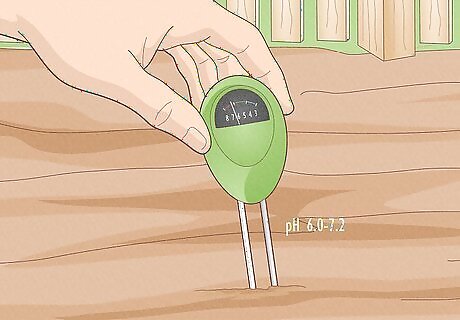
Test your soil pH, and adjust if necessary. Buy a soil testing kit from your garden center or nursery and test a few samples from different parts of your yard. Test your soil a few months in advance of when you plan to lay down the turf, because it may take some time for any necessary amendments to take effect. Most turfgrass species prefer a soil pH between 6.0 and 7.2. If your soil is too acidic (low pH), add some ground limestone to the soil. Garden lime can be bought in most garden supply stores. If your soil is too alkaline (high pH), add garden sulfur or some type of acidic mulch, such as pine needles. Some soil testing kits also allow you to check your soil’s nutrient levels.
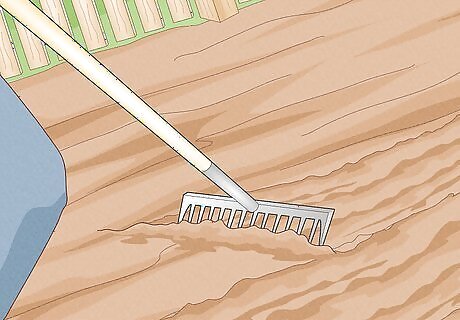
Level the lawn if it’s uneven using topsoil. Pour the topsoil over the lawn and distribute it evenly using a rake. Make sure you fill in holes and break up any mounds of dirt on the lawn. Topsoil is a surface soil that is high in nutrients. You can find bags of topsoil at your local garden center.
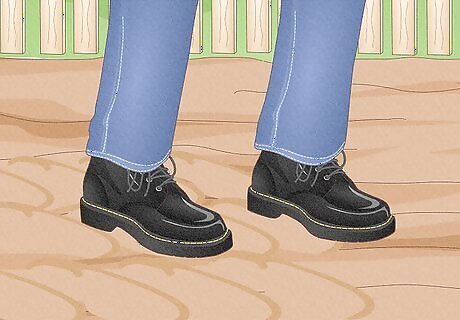
Pack down the top layer of soil using your feet. Walk across the lawn slowly and apply pressure with your feet, making sure every inch of the surface is packed. Rake across the surface of the soil again. To pack soil down more efficiently, rent or buy a water-weighted lawn roller from a garden center or home improvement store. Many models can be either pushed by hand or towed behind a tractor. Adding turf will raise the level of your lawn by about 2 inches (5 cm), so pack your existing soil or turf down by at least that much.
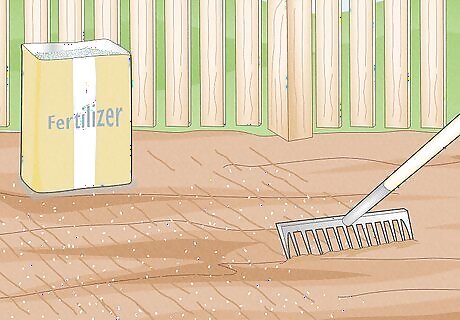
Rake a granular fertilizer over the surface of the soil. A granular fertilizer is just a non-liquid fertilizer. You can find one at your local garden center. Sprinkle the granules of fertilizer across the lawn using your hands or a small hand-held spreader, making sure you don’t miss any spots. Use a “starter” fertilizer, such as NPK 5-10-5 or similar. Fertilizer is not effective if it's used in high temperatures, which is why you should do this in the fall or spring.
Putting down the Turf
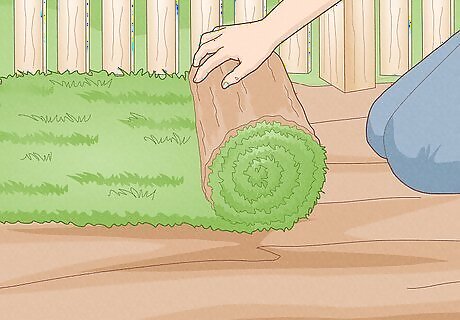
Unroll the first patch of turf, starting at the farthest edge of the lawn. Unroll the turf so the longest side of the turf is parallel with the longest edge of the lawn. Gently press the turf into the ground using your hands.
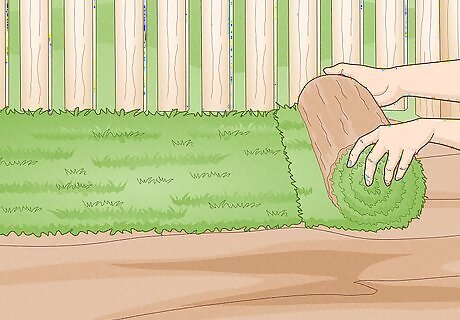
Unroll the second patch of turf so it continues the path of the first one. The short edge of the second turf patch should be closely butted up against the short edge of the first turf. Use your hands to push the 2 edges together. You can also lift the 2 edges and gently roll them together from one end to the other like a zipper. Make sure there’s no gap left between the 2 patches.
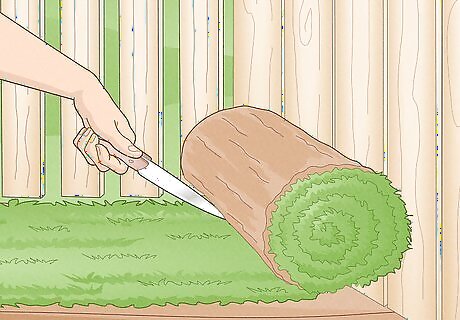
Continue this process until you reach the edge of the lawn. If you reach the edge and there’s extra turf on the patch you’re unrolling, carefully use a sharp knife to cut it down to size.

Begin on the next row, unrolling the patches of turf one at a time. Unroll them so they’re parallel to the first row. The long edges of the turf in each row should be closely butted together so there are no gaps.
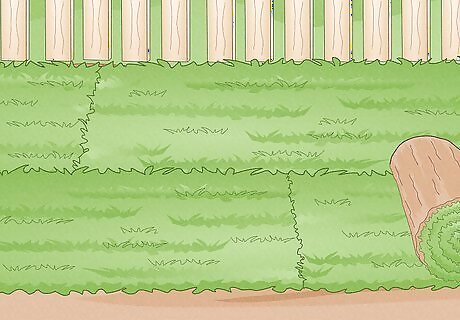
Stagger the patches of turf for more even coverage on the lawn. To stagger the turf, unroll each patch and cut it in half with a carpet knife. Lay the patches in one row so that the middle of the patches line up with the seams in the row next to it.
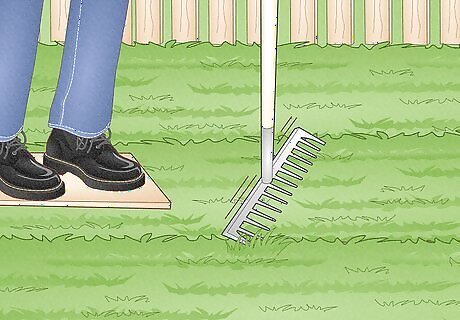
Pack down the turf once it’s laid out. Continue laying rows of turf across the lawn until it’s all covered. Use the back side of a rake to firmly pack down each row of turf so they settle into place. You can also use a hand tamper or a water-weighted lawn roller to pack down the turf. If you choose to use a lawn roller, wait until you have laid out all the strips of turf and then lightly water them before packing them down. Artificial turf can be installed with turf nails.
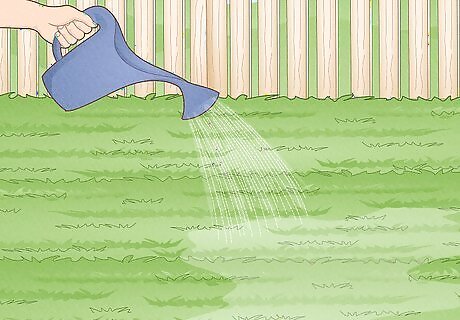
Water the new turf thoroughly. You want the water to absorb into the soil underneath the turf. Water your new turf until it begins to puddle, then let the water soak in. If you water the turf too much, it may cause the turf to separate from the soil beneath it, preventing the turf from rooting properly. Over-watering can also kill the grass by causing cause air pockets to form under the turf.
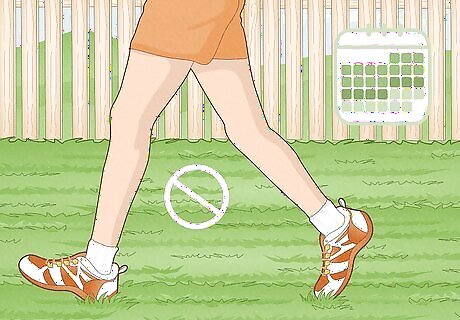
Avoid stepping on the new turf for 2 to 3 weeks. Walking on the turf prematurely may disrupt the rooting process. To test if the new turf has rooted, grab the surface of the turf and gently try pulling it upward. If the turf lifts up, it hasn’t rooted yet.
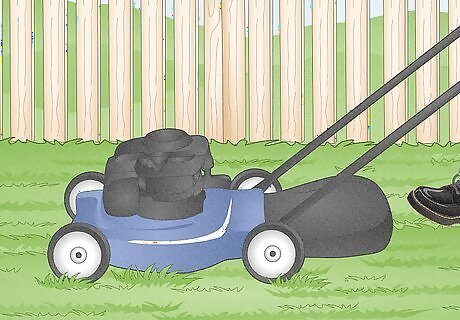
Mow the new lawn once the turf is rooted. Make sure the lawn is completely dry before you start mowing it. Avoid cutting the blades of the turf too short or the roots won’t grow properly. Use a sharp, defect-free blade, and set the mower for at least half or full height for the first mow (and also when you mow during the hottest part of the summer). You should aim to cut off 1/3rd of the height of your lawn each time you mow. Look online or ask someone at your local garden center what the recommended height is for your turf type. After your mow it the first time, let your lawn grow to be 1 and 1/2 times higher than the recommended height before you mow it again.




















Comments
0 comment